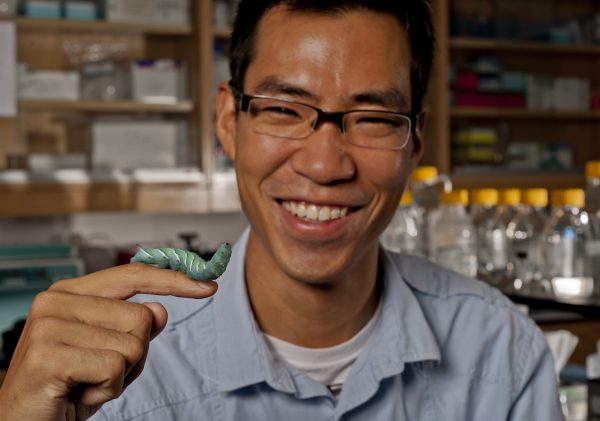A Florida Museum of Natural History lepidopterist recently received $24,000 to research the evolutionary relationships of an agricultural pest known as the tobacco hornworm and its relatives.
The tobacco hornworm is a hawkmoth that occurs worldwide and causes great damage to the leaves of tobacco and tomato plants. The insect is commonly used as a model organism for research due to its short life cycle and simple nervous system.

Florida Museum photo by Kristen Grace
Assistant curator of Lepidoptera Akito Kawahara’s one-year grant from the National Geographic Society will allow researchers around the world to carefully examine evolutionary relationships within the hornworm genus Manduca.
“People have been studying the moth’s physiology, genetics and behavior, but little is known about this group’s evolutionary relationships and there are many possible cryptic species” Kawahara said. “We received this grant to sort out the relationships and see how many species are really in this genus.”
Hawkmoths are among the fastest and most proficient flying insects and more than 1,000 species occur worldwide. Their long proboscis, or mouthpart, makes them important pollinators, since many plants may only be pollinated by hawkmoths. They also serve as food for various animals, including bats and rodents.
“This project itself is focused on the genus Manduca, but it will also tie together questions pertaining to host plant use and serve as part of our project on hawkmoth life-history evolution to see how this spectacular group of insects diversified,” Kawahara said.
“We want to look at the evolutionary tree to see how they evolved over time,” he said. “Darwin described hawkmoths many years ago, and it has become one of those key examples of co-evolution between plants and insects.”
Learn more about the McGuire Center for Lepidoptera and Biodiversity at the Florida Museum.